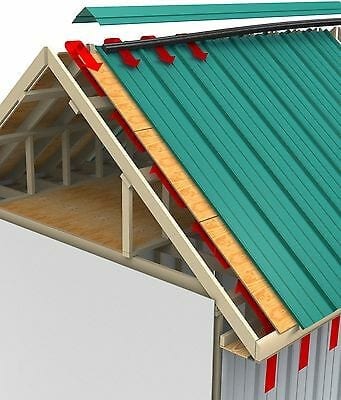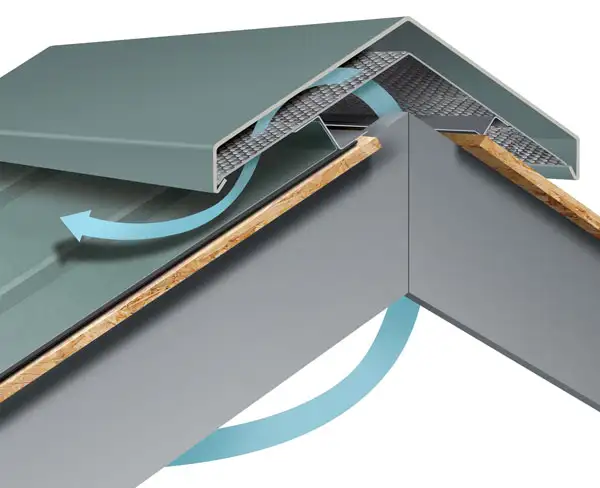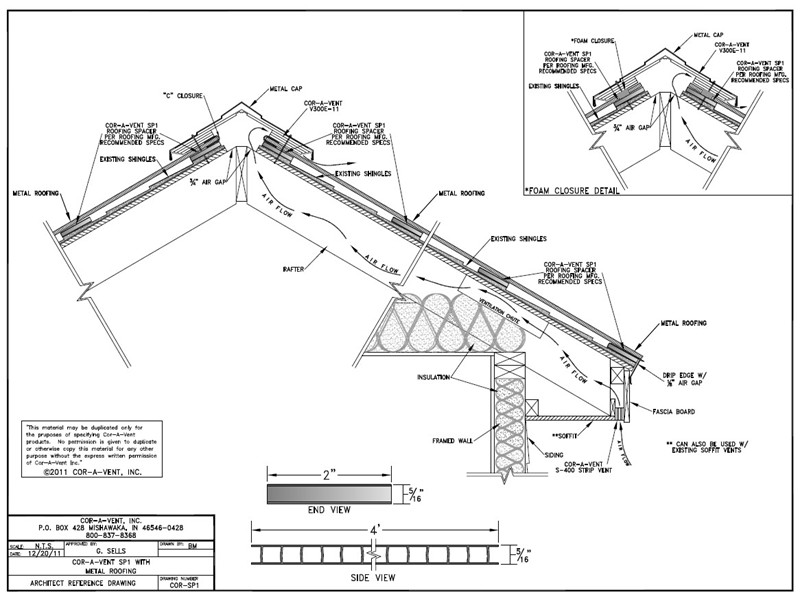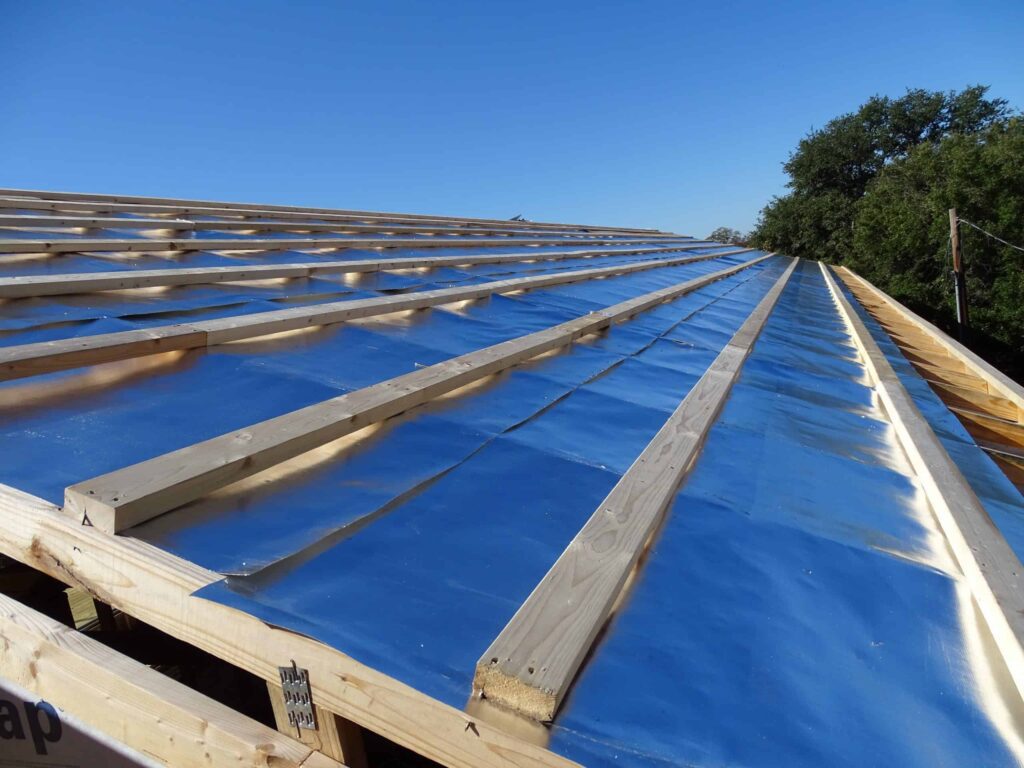When considering a metal roof for your home, one question may arise: does it require an air gap? This article aims to shed light on this common query. Metal roofs have gained popularity due to their durability and long lifespan. However, the issue of proper ventilation is often a concern. In this article, we will explore whether or not a metal roof necessitates an air gap and discuss the potential benefits and drawbacks associated with this ventilation technique. So, let’s clarify the air gap dilemma and help you make an informed decision for your metal roofing needs.
Introduction
In recent years, metal roofs have gained popularity among homeowners for their durability, longevity, and energy efficiency. However, there is a debate surrounding the need for an air gap in metal roofs. Some argue that an air gap is essential for preventing condensation and improving thermal performance, while others believe it may not be necessary in all situations. In this article, we will explore the concept of air gaps in metal roofs, their purpose, and the factors to consider when deciding whether to incorporate one into your roof design.
Understanding Metal Roofs
Before diving into the specifics of air gaps, let’s first define what metal roofs are and discuss the different types available. A metal roof is a roofing system made up of metal panels or tiles that provide protection from the elements. They can be constructed from various materials, including steel, aluminum, and copper. Metal roofs offer numerous benefits, such as durability, fire resistance, and low maintenance requirements, making them an attractive option for many homeowners.

Air Gap in Metal Roofs
What is an Air Gap?
An air gap, as the name suggests, is a space or gap between the metal roof and the rest of the roofing structure. It allows for air circulation and insulation, effectively creating a barrier between the exterior and interior of the building.
Purpose of an Air Gap
The primary purpose of an air gap in a metal roof is to enhance energy efficiency by reducing the transfer of heat. By incorporating an air gap, the roof acts as an additional layer of insulation, preventing heat from penetrating the building during hot summers or escaping during cold winters.
Furthermore, an air gap helps prevent condensation and mold growth by allowing moisture to dissipate. Moisture that becomes trapped between the metal roof and the underlying structure can lead to costly damage and health concerns, making an air gap a valuable feature.
Possible Problems without an Air Gap
Without an air gap, a metal roof may be more susceptible to problems such as condensation, mold growth, and reduced energy efficiency. Condensation occurs when warm, moist air comes into contact with a cold surface, leading to water droplets forming on the underside of the metal roof. This can cause structural damage and compromise the integrity of the roof.
Factors to Consider
When deciding whether to incorporate an air gap, several factors must be taken into account.
Climate and Weather Conditions
The climate and weather conditions in your area play a significant role in determining whether an air gap is necessary. If you live in a region with high humidity or extreme temperature variations, an air gap can provide added protection against condensation and heat transfer.
Ventilation and Moisture Control
Proper ventilation is crucial for maintaining a healthy and energy-efficient home. Consider the existing ventilation and moisture control measures in your building. If your home already has adequate ventilation systems in place, the need for an air gap may be reduced. However, if ventilation is lacking, an air gap can help alleviate moisture-related issues.
Building Codes and Regulations
Always consult local building codes and regulations to ensure compliance when planning any roof modifications or installations. Some jurisdictions may require the use of air gaps in certain types of roofing materials or specific climate conditions.

Pros of Air Gaps in Metal Roofs
While the need for an air gap may depend on various factors, there are significant advantages to incorporating one into your metal roof design.
Enhanced Energy Efficiency
The addition of an air gap can significantly improve the energy efficiency of your home. By reducing heat transfer, your cooling and heating systems won’t have to work as hard to maintain a comfortable temperature, ultimately leading to energy savings.
Improved Thermal Performance
An air gap acts as an extra layer of insulation, helping to regulate temperatures within the building. During hot summers, the air gap minimizes heat gain, keeping the interior cooler. In cold winter months, it acts as a barrier against heat loss. This improved thermal performance can lead to a more comfortable living environment and reduced energy bills.
Prevention of Condensation and Mold Growth
Condensation and mold growth can be detrimental to both the structural integrity of your home and the health of its occupants. An air gap allows moisture to dissipate, preventing these problems from occurring. By incorporating an air gap, you help protect your investment and ensure a healthier living environment.
Cons of Air Gaps in Metal Roofs
While air gaps offer numerous advantages, there are also some potential drawbacks to consider before deciding to include one in your metal roof design.
Increased Cost and Complexity of Installation
The installation of an air gap adds complexity and cost to the overall roofing project. It requires careful planning and the use of additional materials, such as insulation boards or spacers. The added expenses and labor involved should be factored into your decision-making process.
Potential for Air Leakages
If not properly installed or maintained, air gaps can become vulnerable to air leakages. This can compromise the efficiency and effectiveness of the air gap, potentially resulting in reduced energy efficiency and moisture-related issues. It is crucial to ensure that the air gap is properly sealed and regularly inspected to prevent air leakages.
Possible Interference with Solar Roofing Systems
If you plan to install a solar roofing system, the presence of an air gap may interfere with its efficiency. It is essential to consult with a professional to determine compatibility and find alternative solutions if necessary.

Alternatives to Air Gaps
While air gaps are a popular choice, there are alternative options for insulating your metal roof.
Radiant Barrier Insulation
Radiant barrier insulation is a reflective material that is installed directly below the metal roof to reduce heat transfer. It reflects radiant heat, rather than absorbing it, and can be an effective alternative to an air gap in certain climates.
Spray Foam Insulation
Spray foam insulation is a versatile and efficient option for insulating metal roofs. It seals gaps and provides excellent thermal resistance, reducing heat transfer and preventing condensation.
Built-Up Roofing Systems
Built-up roofing systems involve the layering of multiple materials, such as insulation boards and membranes, to provide insulation and protect against moisture. While they may not offer the same benefits as an air gap, they can be a viable alternative in specific situations.
Importance of Proper Installation
Regardless of whether you choose to incorporate an air gap or opt for an alternative method of insulation, proper installation is crucial for maximizing the benefits and performance of your metal roof.
Ensuring Proper Air Circulation
If you decide to include an air gap, it is important to ensure proper air circulation within the space. This can be achieved by using ventilation systems, such as ridge vents or soffit vents, to allow air to flow freely and prevent the build-up of moisture.
Preventing Thermal Bridging
Thermal bridging occurs when heat is transferred through a conductive material, bypassing insulation and reducing energy efficiency. Proper installation techniques, such as using insulation boards and thermal breaks, can help minimize thermal bridging and ensure optimal performance.
Minimizing Moisture Buildup
Even without an air gap, it is crucial to address moisture-related concerns. Proper insulation and moisture control measures, such as vapor barriers and adequate ventilation, should be implemented to minimize the risk of condensation and mold growth.

Maintenance and Inspection
To ensure the longevity and performance of your metal roof, regular inspections and maintenance are essential.
Regular Inspections and Maintenance
Periodically inspect your metal roof for any signs of damage, such as loose panels, leaks, or rust. Addressing these issues promptly can prevent further damage and extend the lifespan of your roof.
Repairing and Sealing Potential Leaks
If you notice any leaks or gaps in your metal roof, it is crucial to repair and seal them immediately. Water penetration can cause significant damage to both the roof structure and the interior of your home.
Updating Insulation and Ventilation Systems
Over time, insulation and ventilation systems may need updating to ensure optimal performance. Consult with professionals to assess the effectiveness of your current systems and make any necessary adjustments or improvements.
Conclusion
In conclusion, while the need for an air gap in a metal roof may vary depending on several factors, they offer significant benefits in terms of energy efficiency, thermal performance, and moisture control. However, it is crucial to consider factors such as climate, ventilation, and building codes when deciding whether to incorporate an air gap. Alternatives to air gaps, such as radiant barrier insulation and spray foam insulation, can also provide effective insulation solutions.
Regardless of the insulation method chosen, proper installation techniques, ongoing maintenance, and regular inspections are crucial to maximize the performance and longevity of your metal roof. By considering these factors and taking the necessary steps to ensure a well-insulated and properly maintained roof, you can enjoy the numerous advantages that a metal roof has to offer.
